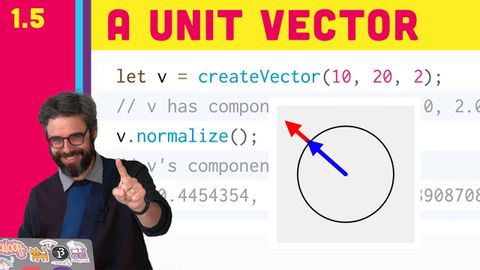
Subtitles & vocabulary
1.5 A Unit Vector (Normalize) - The Nature of Code
00
林宜悉 posted on 2020/03/27Save
Video vocabulary
process
US /ˈprɑsˌɛs, ˈproˌsɛs/
・
UK /prə'ses/
- Transitive Verb
- To organize and use data in a computer
- To deal with official forms in the way required
- Noun (Countable/Uncountable)
- Dealing with official forms in the way required
- Set of changes that occur slowly and naturally
A2TOEIC
More matter
US /ˈmætɚ/
・
UK /'mætə(r)/
- Intransitive Verb
- To be of great importance; to count
- Uncountable Noun
- Material all things are made of that fills space
A1TOEIC
More scale
US /skel/
・
UK /skeɪl/
- Noun (Countable/Uncountable)
- Size, level, or amount when compared
- Small hard plates that cover the body of fish
- Verb (Transitive/Intransitive)
- To change the size of but keep the proportions
- To climb something large (e.g. a mountain)
A2TOEIC
More common
US /ˈkɑmən/
・
UK /'kɒmən/
- Noun (Countable/Uncountable)
- Area in a city or town that is open to everyone
- Field near a village owned by the local community
- Adjective
- Shared; Belonging to or used by everyone
- Typical, normal; not unusual
A1
More Use Energy
Unlock All Vocabulary
Unlock pronunciation, explanations, and filters
